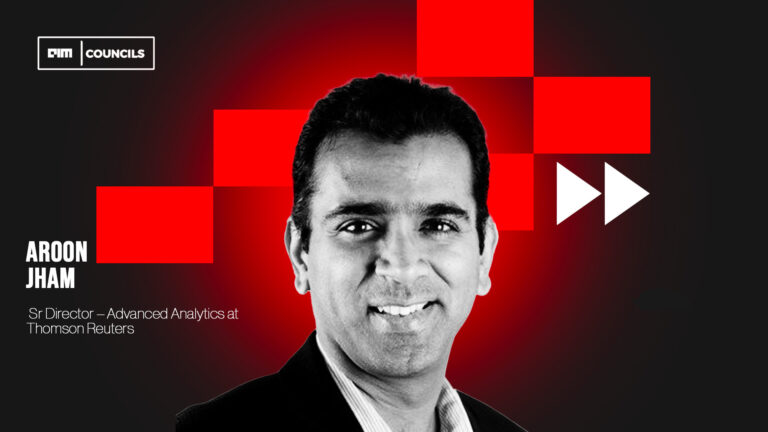Introduction
Scaling GenAI in a business isn’t a straight shot, it’s a journey that demands attention to strategy, tech, costs, and ethics. I recently led a project to automate parts of our master data management, and it opened my eyes to both the game-changing wins and the curveballs you don’t see coming. This is what I’ve learned, distilled into practical steps to help you navigate your own GenAI expansion.
Strategic Foundations
Tie It to What Matters
Before you scale GenAI, pin down how it supports your business goals and make sure you can measure the impact. That focus guides your decisions and justifies the investment. Start with one or two use cases that hit the real pain points or efficiency gaps head-on.
For us, it was master data management. Our researchers were bogged down comparing records like “ABC Inc” and “ABC CPAs,” spending hours on manual Google searches to confirm matches. We tracked time per record, productivity, and errors to prove the value. It gave us a clear win to build on.
Focusing like this is the key, especially when governance and development resources are stretched thin. Prioritizing a few high-impact areas lets you build solid compliance frameworks without diluting your effort across too many projects.
Set the Right Bar
Not every GenAI solution needs the latest/greatest model. Match the tech to your needs. Bigger models bring more power, but are more costly and complex. Start with something that delivers quick value while you get comfortable with the tech.
Governance and Compliance Framework
Tackling the Compliance Puzzle
GenAI’s unpredictable nature doesn’t play nice with old-school governance. You’ve got to adapt to the shifting AI regulations across regions, track decision logic, safeguard data privacy in training and outputs, and sort out IP for what the AI generates. When you add industry rules (think healthcare or finance), it becomes difficult to manage as you grow.
Build Governance That Scales
We have tackled this issue by designing a framework that grows with us:
- Assess risks by use case—low stakes, light touch; high stakes, deep dive.
- Keep documentation thorough but streamlined.
- Reuse compliance approaches for similar projects.
- Automate monitoring to ease the load.
- Train our teams to flag issues early, before the specialists step in.
In our data project, we built a three-tier system: “confirmed match,” “confirmed non-match,” and “needs a human look.” This design pattern not only improved efficiency but also satisfied our governance team’s need for explicit human oversight of uncertain cases, a pattern we can now reuse for other applications. Smart governance clears the way instead of blocking it.
Technical Infrastructure Considerations
Data Is the Bedrock
GenAI thrives on good data. We focused on authoritative trusted sources like DUNS and ZoomInfo, and regular quality checks. If you skimp here, your results will falter, no matter how slick the model is.
Keep the Tech Manageable
Pick tools that fit your cloud setup and avoid overbuilding—simplicity scales better. Our solution blended Alteryx’s fuzzy matching with GPT-4o’s reasoning and research tools like Serper and DuckDuckGo. It leveraged what we already had while introducing GenAI where it counted the most: automating research and decisions.
Plan for:
- APIs that handle higher volumes.
- Load balancing to keep performance steady.
- Backends that grow with your needs.
Mind the Latency
Even fast models slow down when they lean on external tools or APIs. We experienced this in our project, where simultaneous calls to OpenAI and research tools slowed things down. Since it wasn’t customer-facing, we throttled it to avoid rate limits, but it showed us that we should test the whole pipeline under load, not just the AI.
Try:
- Caching frequent tool results.
- Running tasks asynchronously where possible.
- Consider ‘chain of draft’ for reasoning in place of ‘chain of thought’ where appropriate.
- Stress-testing end-to-end.
Operational Challenges
Control the Costs
GenAI costs can spiral—tokens, compute, API calls stack up fast. In our data work, we didn’t just pick a cheaper model; we used Alteryx to filter out easy non-matches before hitting GPT-4o, for cutting costs without cutting corners. It’s a trick we’re reusing.
Stay on top with:
- Use dashboards to spot trends.
- Tight prompts to save tokens.
- ‘Chain of draft’ is a consideration here as well.
- Access tiers based on needs to capabilities.
- Check the cost to value ratio regularly.
Handle Model Updates
New versions can boost performance—or disrupt workflows. Test them in a safe space, keep integrations compatible, track changes, and have a rollback plan. For compliance, log which version did what—it’s a must for audits. In regulated cases, you can consider “freezing” models for consistency.
Human and Organizational Factors
Bring Your Team Along
GenAI shifts how people work—some worry about their jobs, others resist, and a few lean on it too much. Our data management automation became a strategic imperative, partly because the researcher role had our company’s highest attrition rate. By automating the most mundane aspects—particularly the tedious Google searches to verify potential duplicates—we quantify time savings and enable researchers to focus on complex and rewarding tasks.
Ease the transition:
- Frame AI as a partner, not a threat.
- Open channels for feedback.
- Pair it with training to build skills.
- Set clear lines for human judgment.
Multi-Agent Systems
Using multiple AIs together is powerful but tricky—coordinating them, defining roles, resolving conflicts takes work. Start with clear tasks (one that researches, and another that summarizes) to keep it manageable. We did use a multi-agent system in our solution, but each agent had very simple tasks such as, fetching URLs, home page scraping, and comparing results for making final determination in case the records were duplicate.
Ethical and Responsible Implementation
Catch the Bias
Models can amplify data biases, and their effects can snowball at scale. In our master data management solution, we discovered that the model occasionally exhibited geographical biases, identifying entity relationships in North American contexts more confidently than in emerging markets. By creating test suites with deliberately diverse geographical examples, we improved the model’s performance across regions.
Steps to take:
- Audit output across groups.
- Test with varied scenarios.
- Keep humans involved for big decisions.
- Let users report odd results.
Be Open About It
Tell people when AI is involved, what it can do, and how it works. Log decisions for compliance and explain them clearly about governance. It’s the right call and it saves hassle later.
Future-Proofing Considerations
Stay Current
Models drift as the world changes. Refresh them with new data, monitor for fake. Add or update the data for timely knowledge bases and note their limits.
Don’t Get Locked In
Over-relying on one vendor stings when terms shift. We have spread our stack, including Alteryx, OpenAI, Serper, and it has kept us flexible. Build with swaps in mindset, diversify where it makes sense, and scrutinize agreements.
Conclusion
Scaling GenAI takes a mix of tech smarts, people skills, ethical grounding, and strategic focus, all tied together with governance that enables and doesn’t stall. Stick to a few high-value wins as it is easier to get the right solution than juggling a dozen of experiments. Our data project saves time and cuts the errors by making a tough job worth sticking around for.
The real payoff comes when GenAI isn’t just a tool but a boost formaking your team sharper and your work stronger, all while staying within the lines. That’s where it clicks.












